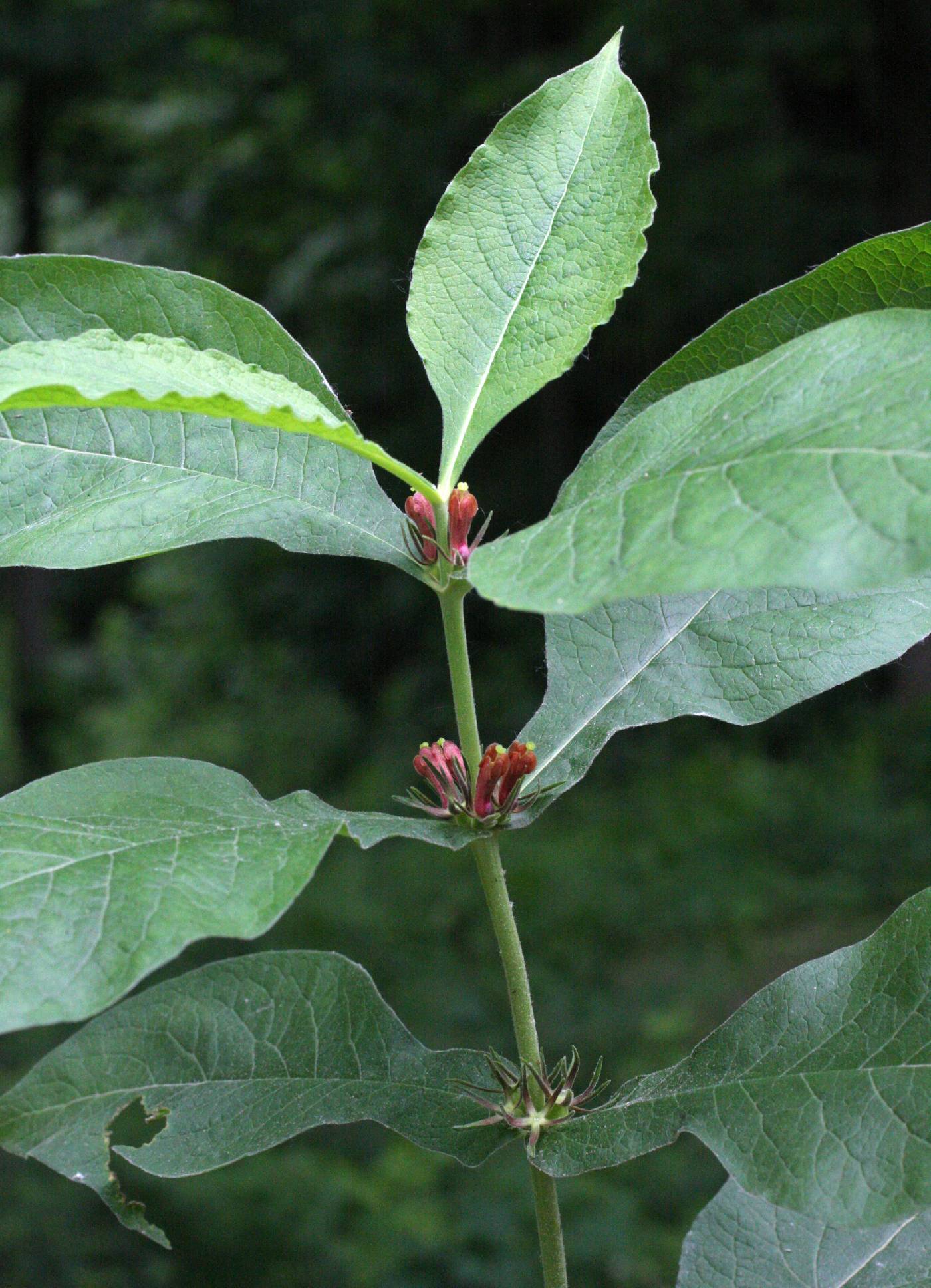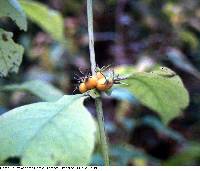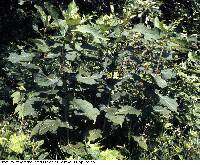|
|
|
|
Family: Caprifoliaceae
feverwort
|
Perennial herb to 1.3 m tall Stem: upright, coarse, sticky, densely short-hairy. The hairs are glandular and mostly under 0.5 mm long, often with longer non-glandular hairs intermixed. Leaves: opposite, stalkless, 10 - 30 cm long, 4 - 15 cm wide, broadly elliptic with broadly tapering base and pointed tip, fiddle-shaped, sometimes slightly wavy along the margins, sparsely glandular-hairy above, densely soft-hairy beneath. Bases of paired leaves fused (connate), and seemingly pierced by stem. At least three or more pairs of the leaves are connate. Flowers: one to four, in upper leaf axils. Sepals five, 1 - 1.8 cm long, about 1.5 mm wide, linear, elongate, finely hairy (often glandular) on the back and along the margins. Corolla unequally five-lobed, purplish to greenish yellow, 8 mm - 2 cm long, tubular or bell-shaped, base swollen, crisp-hairy. Stamens five. Style exserted from the corolla. Fruit: berry-like (drupe), dull yellowish orange, hairy, dry, with persistent five-lobed calyx. There are three oblong stones inside each drupe. Similar species: In the Chicago Region, Triosteum perfoliatum differs from other Triosteum species by having a combination of densely short-hairy stems, hairy corollas, exserted styles, and at least three or more pairs of leaves connate at the base. Flowering: mid-May to mid-June Habitat and ecology: Locally frequent in open woods, and occasionally found along railroads and fencerows. Often growing in thin or rocky soils. Occurence in the Chicago region: native Etymology: Triosteum comes from the Greek words treis, meaning three, and osteon, meaning "a bone" (in reference to the three stones inside the fruit). Perfoliatum means "leaf surrounding the stem." Author: The Morton Arboretum Coarse herb to 13 dm; stems crisp-hairy, the abundant hairs mostly less than 0.5 mm; lvs obovate, ovate-oblong, or subrhombic, the main ones 10-30 נ4-15 cm, narrowed below the middle but broadly connate-perfoliate at base (3-9 cm wide where united), sparsely setose above, usually densely and softly hairy beneath; fls (1-)3-4 per axil; sep 10-18 mm, ca 1.5 mm wide, finely and uniformly hairy on the back and margin, often also glandular; cor 8-17 mm, crisp-hairy, purplish to dull greenish-yellow, the style exsert ca 2 mm; frs subglobose, dull orange-yellow; 2n=18. Woods and thickets, often in thin or rocky soils; Mass. to s. Ont. and Minn., s. to S.C. and Okla. May-July. Gleason, Henry A. & Cronquist, Arthur J. 1991. Manual of vascular plants of northeastern United States and adjacent Canada. lxxv + 910 pp. ©The New York Botanical Garden. All rights reserved. Used by permission. |





